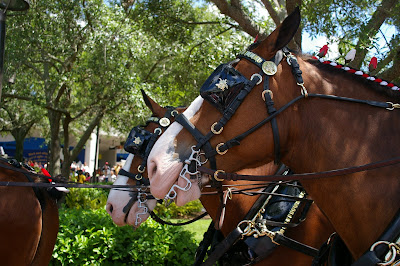
When did Anheuser-Busch acquire the famous Budweiser Clydesdales?
They were formally introduced to August A. Busch Sr. and Anheuser-Busch on April 7, 1933, to celebrate the repeal of Prohibition. August A. Busch Jr. wanted to commemorate the special day. To his father's delight, the hitch thundered down Pestalozzi Street carrying the first case of post-Prohibition beer from the St. Louis brewery.

What are the qualifications to be a Budweiser Clydesdale?
To qualify for one of the six hitches (five traveling and one stationary), a Budweiser Clydesdale must be a gelding at least four years of age. He must stand 72 inches, or 6 feet, at the shoulder when fully mature, weigh between 1,800 and 2,300 pounds, be bay in color, have four white stocking feet, a blaze of white on the face, and a black mane and tail.
How much food and water do the Clydesdales need?
Each hitch horse will consume as much as 20 to 25 quarts of whole grains, minerals and vitamins, 50 to 60 pounds of hay and 30 gallons of water per day.
How big are the Clydesdales' horseshoes?
Clydesdale horseshoes measure more than 20 inches from end to end and weigh about five pounds - more than twice as long and five times as heavy as the shoe worn by a riding horse. A horse's hoof is made of a nerveless, horn-like substance similar to the human fingernail, so being fitted for shoes affects the animal no more than a manicure affects people.

Why does a Dalmatian accompany the hitch?
Dalmatians have traveled with the Clydesdale hitch since the 1950s. The Dalmatian breed long has been associated with horses and valued for their speed, endurance and dependable nature. Dalmatians were known as coach dogs, because they ran between the wheels of coaches or carriages and were companions to the horses. Today, the Dalmatians are perched atop the wagon, seated next to the driver.





1 comment:
I have seen these beautiful horses at Bush Gardens in Williamburg VA. and they are truely magnificant animals!
Post a Comment